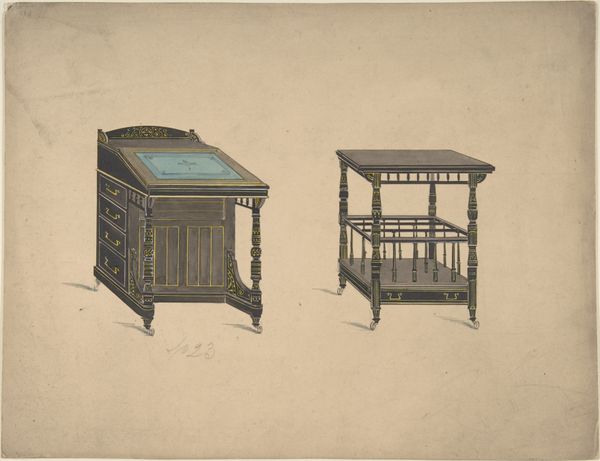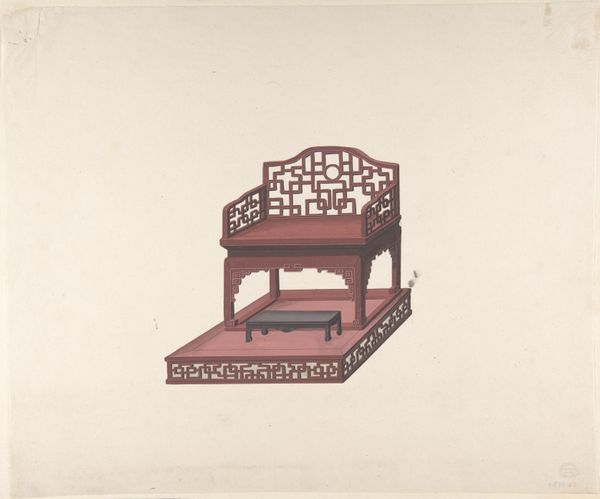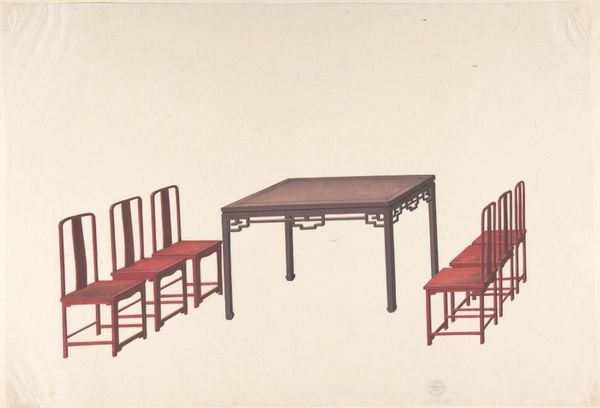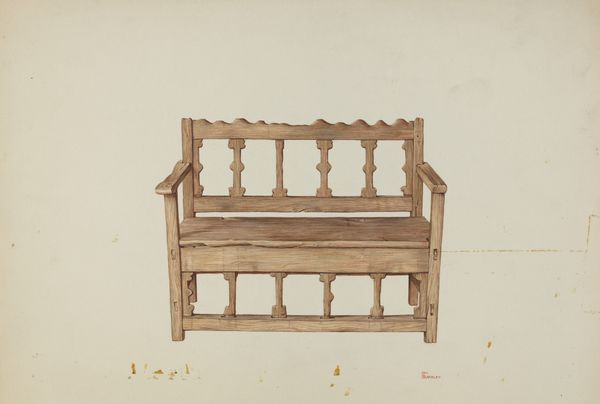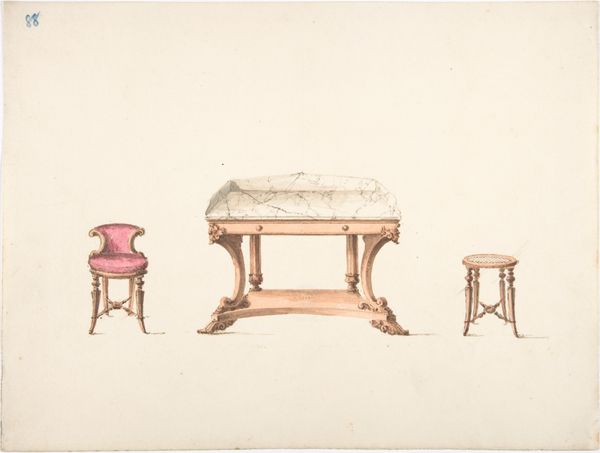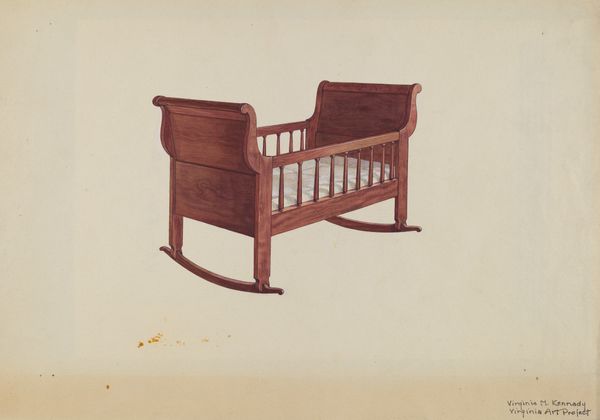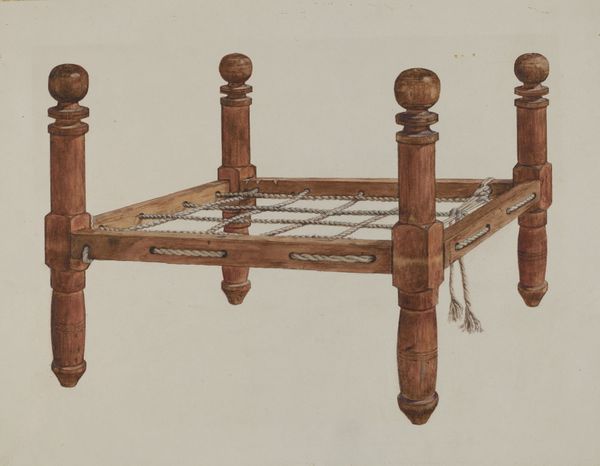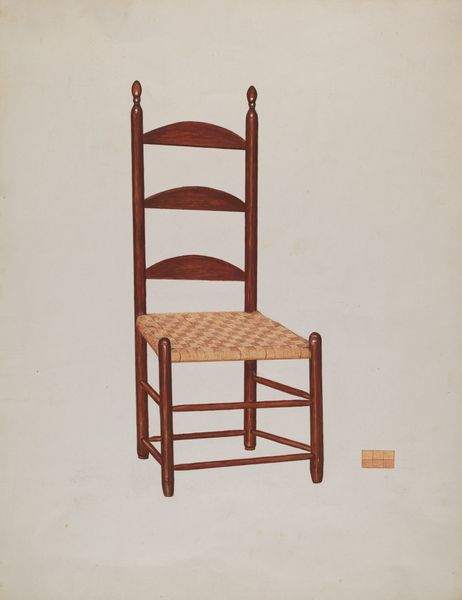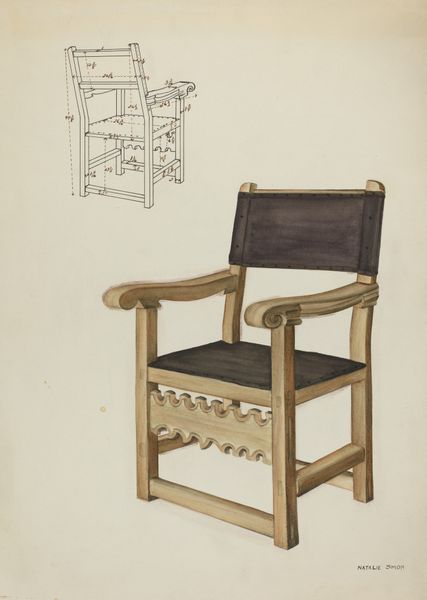
drawing, print, etching, paper, watercolor, ink
#
drawing
#
neoclacissism
# print
#
etching
#
asian-art
#
etching
#
paper
#
watercolor
#
ink
#
watercolour illustration
#
decorative-art
Dimensions: sheet approx.: 11 x 16 in. (27.9 x 40.6 cm)
Copyright: Public Domain
Editor: Here we have an ink, watercolor, and etching on paper, titled "Design for Export Furniture," likely created between 1795 and 1805 by an anonymous artist. It's an intriguing depiction of furniture, possessing a certain delicate precision, almost like an architect’s rendering. What strikes me most is its cultural hybridity; it feels Western in form, yet distinctly Asian in ornamentation. How do you interpret this interplay of styles? Curator: This piece embodies the fascinating dynamics of global trade and cultural exchange during that era. These "export designs" weren't merely about producing furniture; they reflected the desires and demands of a specific market – the Western consumer. Think about the socio-political implications: who had the power to dictate aesthetic trends, and how did this impact artistic production in Asia? The Asian-inspired motifs catered to the Western fascination with the "Orient," creating a romanticized and often inaccurate representation. Editor: So it's less about authentic cultural representation and more about satisfying a Western gaze? Curator: Precisely. And that gaze had significant economic and cultural power. Western merchants and companies commissioned pieces like this, impacting local craft traditions and labor practices. The “anonymous” artist underscores this dynamic: their individual artistic expression becomes subservient to the demands of the market, highlighting the asymmetries of colonial trade relationships. What does this anonymity suggest to you? Editor: It paints a rather somber picture, where the artist's identity is eclipsed by the market forces at play. I initially saw a delicate beauty, but now recognize a more complex narrative of cultural appropriation and economic influence. Curator: Exactly. And that's the power of art history - to unveil these layers of meaning and understand the complex relationships between art, society, and power. Editor: It makes you realize that even seemingly decorative pieces carry a weight of history and cultural exchange, don't they?
Comments
No comments
Be the first to comment and join the conversation on the ultimate creative platform.
